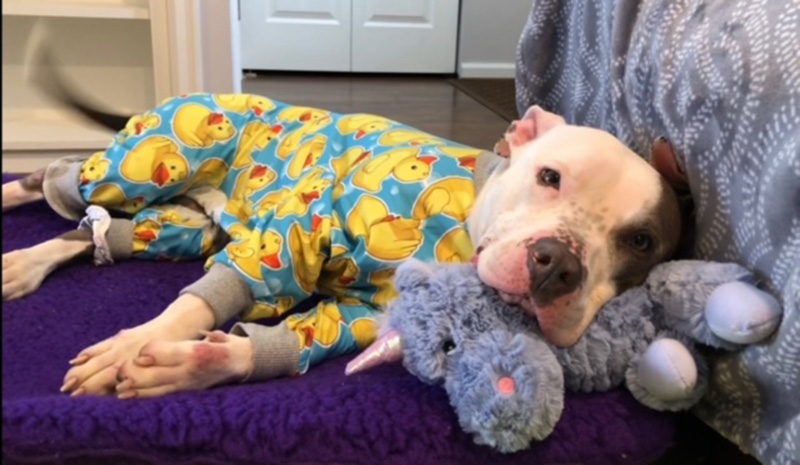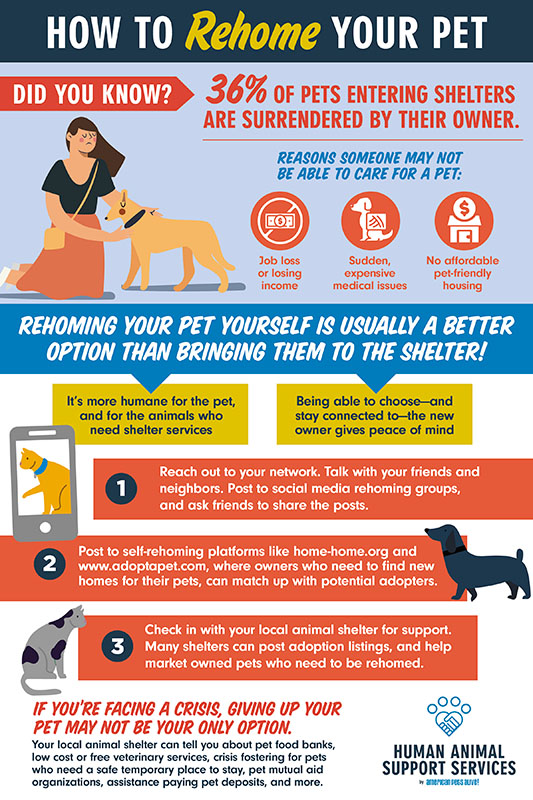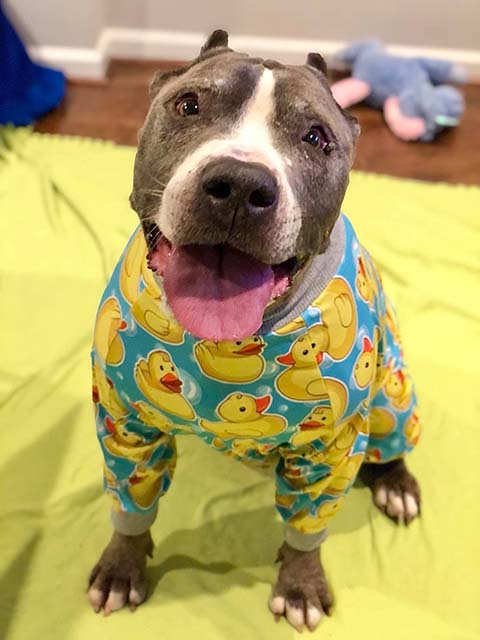Our top 10 blogs of 2021 reflect both the immense and ongoing challenges of the last year, and how we’ve come together to protect and support our communities—the people and pets alike.
Plus, foster dogs in pajamas.


1. Animal Shelter Workers Are Burned Out
“After last year’s COVID-related lull, this summer animal shelters all over the country are full again—and it’s not just the animals who are at risk. The people whose job it is to care for the animals under these extreme conditions are suffering, too. ‘It’s everyone,’ said Ally Sivalls, behavior manager for ACCT Philly, Philadelphia’s largest open intake shelter and only animal care and control provider. ‘This is what it’s like in animal sheltering right now.’”
Our most-read blog of 2021, by Arin Greenwood, sheds light on burnout in animal shelter workers, and how it hurts both humans and animals. The blog also shares ideas for managing burnout in yourself and your staff—and how implementing the HASS elements can change the conditions of sheltering to reduce burnout, and help animals and people.
2. Please Share This Infographic on How to Self-Rehome Pets
Sometimes people can no longer care for a loved pet. That may be because they’ve lost their job, or lost their housing, or experienced another crisis or major life change.
It can be a confusing, extremely hard situation for families in this position who may think their only option is bringing a pet to the animal shelter, to help them stay safe and find a new home.
Some 36 percent of pets entering shelters, are owner surrenders. But often the better course is for a family to self-rehome their pet.
That’s why we created this blog and infographic: to help demystify the process of how to do just that.


Here’s the blog. And please share it and this self-rehoming infographic far and wide!
3. Barrier Busting Basics for Busy Animal Shelters
“Get rid of barriers” is one of the most commonly uttered phrases in animal welfare and for good reason. Barriers get in the way of us helping pets and people, and they prevent us from truly engaging our whole communities.
Barriers are, by their nature, discriminatory. They disproportionately impact poor people and other marginalized groups. They also stop adoptions and foster placements. And in doing so, they slow down the entire system. Animals don’t move quickly through the shelter system, and that leaves less space for incoming cats, dogs, and other pets.
How do these obstacles show up and what can we do about it? These are the questions we tackled in this widely-read blog by HASS and AmPA! director Kristen Hassen.
4. Feline Behavioral Euthanasia: The Three Reasons It Happens and What to Do Instead
Save more cats by reading this excellent blog by Monica Frenden-Tarant, Maddie’s® Director of Feline Lifesaving at American Pets Alive!. It delves into the three main reasons cats are still euthanized for behavior—aggression, being unsocial, and house-soiling—giving alternative live outcomes that are possible in almost every instance.
5. Keeping Families Together During the Eviction Crisis: Tools and Resources for Animal Shelters and Communities
Millions of American families are at risk of losing their homes to eviction—including millions of pets.
To prevent families from being broken up and animal shelters from becoming overwhelmed, we put together tools and information you can use to keep pets and people together, and pets out of shelters.
These resources are just as relevant and urgently needed today as when we published the blog in August, so please keep reading, sharing, and using the blog.
6. ‘Littermate Syndrome’ Myths Busted–You Don’t Need to Adopt Out Pets in Pairs
Monica Frenden-Tarant’s second blog on our year’s top 10 list busts the myth that kittens must be adopted in pairs, and puppies can’t be. Monica takes an evidence-based approach to knocking down this barrier to getting animals into homes:
“There is no behavioral science behind these exceedingly common myths that kittens who aren’t adopted in pairs, or puppies who are, will turn into gremlins who destroy your home at midnight. Or won’t be well behaved. Or will have bad social skills. It’s time to put these myths—called ‘single kitten syndrome’ when applied to cats, and ‘littermate syndrome’ for dogs—to bed, along with any adoption policies that are driven by them.”
7. Code Red: 12 Tips for Managing Intake During a Space Crisis
If your shelter is full or nearly full, you may find you need to ask the community to help keep non-emergency pets out of the shelter for several weeks or more.
In this blog, Kristen Hassen gave 12 critical tips on how to prevent euthanasia for space AND keep your community on your side.
8. Confessions of an Irresponsible Pet Owner
“My descent into irresponsible pet ownership began when I was just eight and received a white bunny rabbit as an Easter present. My parents built a little hutch in the backyard and Thumper was beloved, but only as an outdoor pet. I cared for him reasonably well with my mom’s help, but after a couple of years, my brother, then just a toddler, let Thumper out of his cage and we never saw him again. Following this loss, my parents purchased for me a budgie parakeet, complete with a cage that hung next to my bed. Though unable to be handled, my bird was a well-cared for pet until one night, our family cat broke into his cage and attacked him. For this, my mom said she felt FIV (he had a positive diagnosis) was what made our cat so aggressive and she took him to the vet to be euthanized. Sometimes I feel like my childhood was a training ground for learning about the disposability and replaceable nature of companion animals.”
This begins Kristen Hassen’s powerful, compassionate, must-read essay about her lifetime of owning pets—what it’s taught her about forgiveness, trust, vulnerability, and acceptance. And how all of this inspires Kristen’s work today with HASS, advancing community-focused sheltering:
“People who adopt animals want to do the right thing and they start with the best intentions. When they mess up, it’s our job to help provide them support and resources, help them rehome their pet if it truly isn’t an appropriate fit, and in many cases, give them whatever we can to help make the human animal relationship successful. We have to be a lot more forgiving of people’s mistakes and make the shelter (and rescue) a shame-free place where people can be truthful, vulnerable and imperfect.”
9. If Rental Restrictions Were Lifted Tomorrow, We Could Save 10.5 Million Pets
In July, Michelson Found Animals Foundation in partnership with the Human Animal Bond Research Institute (HABRI), released their Pet Inclusive Housing Initiative Report. It provides a comprehensive overview of the impact of pet policies on the 43 million renter-occupied households in the U.S., and how expanding these housing options would benefit both landlords and renters.
Kristen Hassen wrote up the report’s eye-opening findings in this blog. A big one: If pet restrictions were lifted, 10.5 million pets would be positively impacted, either by being adopted or by NOT being surrendered to an animal shelter. This means we could, with no other actions, virtually solve the pet homelessness problem and help even more pets.
Check out the whole blog for more key takeaways, and what they mean for animal welfare, pets, and people.
10. Shelter Pets Wear Pajamas on Sleepovers to Help Get Them Adopted
Well we couldn’t resist the opportunity to show you a lot of pictures of BARCS foster dogs wearing sweet little PJs—and apparently you couldn’t resist them either.


Our 10th most-read blog of the year, this Steal this Idea by Arin Greenwood, isn’t just darling pictures (though there are a whole heck of a lot of them).


It’s also about how putting foster dogs in pajamas helps them get comfortable, and helps them find adoptive homes—along with tips for how your organization can do all this, too!Check out the blog here—and reach out if you have an idea for a Steal This Idea or other blog. Heck, it could well land on our 2022 top blogs list!
Source: Human Animal Support Services












